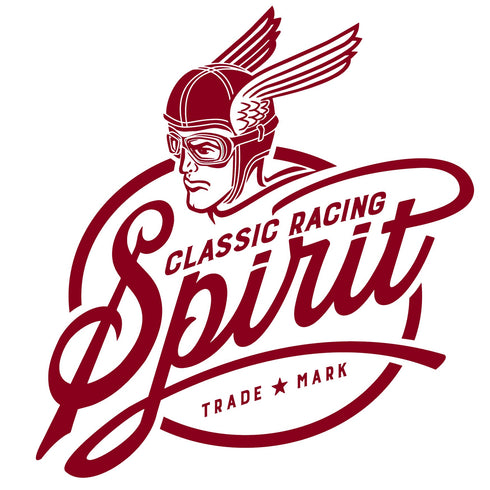The 1935 Grosser Preis von Deutschland (German Grand Prix), held on the 28th July, was a done deal before it started. No fewer than five Mercedes-Benz and four Auto Union “Silver Arrows” would be lining up to represent the Fatherland. Very few of the 300,000 spectators who lined the Nürburgring that day believed that they would see anything other than a German car take the win in front of the Third Reich’s High Command.
Outdated and outnumbered
In the three preceding championship grands prix in Monaco, France and Belgium, Mercedes-Benz drivers had triumphed; spurred on by huge investment from the National Socialist (Nazi) government and by sizeable win bonuses. Both the Mercedes-Benz streamlined W25B and the rear-engined Auto Union Bs produced 375 brake horsepower, which was significantly more than their nearest challengers; Italy’s Scuderia Ferrari and their outdated Alfa Romeo P3 (Tipo B) cars, which could only generate around 265 horsepower.
Prior to the start of the race, it had begun raining and the track surface was becoming wet. Sitting in his Alfa Romeo on the front row alongside Hans Stuck’s Auto Union, the hugely successful Italian driver Tazio Nuvolari was hoping that the damp conditions would go some way towards neutralising the power advantage of the Silver Arrows. Ahead of him were twenty-two laps of the gruelling 14.17 mile (22.8km) Nordschleife circuit.
The race didn’t get off to a great start for Nuvolari; finding himself swamped by the Germans and dropping immediately from second place to fifth. Mostly out of position due to the starting grid having been determined by a ballot, the Silver Arrows quickly surged through the other cars and began to power away from the field.
Refuelling disaster
Nuvolari regained focus and drove sublimely, taking each of the 174 turns of the ‘ring as quickly as possible, making the most of his characteristic flat-out understeering drift technique. Tazio could stay on the throttle and balance the car’s gentle drift around each bend with the front wheels turned-in slightly, rather than adopt the more aggressive oversteer and opposite lock which his competitors favoured. By the end of the ninth lap, as the various leaders made their pit stops, he’d climbed back up to second place. A lap later, he overtook Rudolf Caracciola’s Mercedes-Benz to take the lead.

When Nuvolari pitted to refuel, disaster struck. The refuelling pump had broken, forcing the Scuderia’s mechanics to replenish the car manually from cans. The whole pit stop lost him two minutes 14 seconds and dropped him back down to sixth place.
Undeterred, Nuvolari resumed his charge, driving on the limit around the rain-soaked track. While others struggled to maintain grip in the wet, Tazio’s smoother driving style and feel for the car prevailed and in a single lap he regained second place passing Stuck, Caracciola, Luigi Faglioli (Mercedes-Benz) and also Bernd Rosemeyer (Auto Union) who had pitted.
Last lap drama
It was lap 12 and the aristocratic German racer Manfred von Brauchitsch was now leading in his W25B by a minute and nine seconds. But his tyres were wearing faster than Nuvolari’s and lap after lap the Italian began to get closer. Aware of the chasing Alfa Romeo, von Brauchitsch drove more aggressively; pulling out another three seconds on the penultimate tour. He was 35 seconds ahead as his Mercedes-Benz approached the start of the final lap.
The German took a moment to check his car. The engine still sounded as crisp as when he’d started, the front tyres looked good. Glancing over his right shoulder, the right rear tyre was also fine. Looking back over his left, he was shocked to see a white band in the middle of the rubber on the left rear. The tread was down to the canvas. Although the Mercedes-Benz mechanics were known for their efficiency, he knew that if he pitted for new tyres, he would hand the race to Nuvolari. He had no choice but to go around again, hoping the tyre would hold.
Just over halfway around the Nordschleife is the iconic banked hairpin called the Karussell (carousel), one of the slowest corners on the circuit which drivers go into blind after a long uphill section. As von Brauchitsch braked for the turn, his left rear tyre finally let go, leaving him unable to hold off the closing Alfa Romeo.
An impossible victory
Nuvolari swept past the limping Mercedes-Benz and, to the huge surprise of the crowd waiting at the finish, crossed the line in first place. Unbelievably, he had won; completing twenty-two punishing laps in a time of just over 4 hours and 8 minutes. The German crowd was silent, unsure as to what had happened, until suddenly they erupted into cheering for the ecstatic Italian racer.

It took a further two minutes before the second place finisher Hans Stuck appeared, with Rudolf Caracciola another minute behind him in third. An inconsolable Manfred von Brauchitsch finally crossed the line over six minutes after Nuvolari to finish fifth behind Bernd Rosemeyer.
Such was the certainty of a home win that the Nazi Party organisers only had a recording of Deutschland über Alles, their national anthem, to play at the trophy ceremony. Such was the self-belief of Tazio Nuvolari that he always carried with him a record of the Italian Marcia Reale, which he gladly let them borrow.
Out of twenty cars and drivers starting the 1935 German Grand Prix only twelve finished, and just six covered the full race distance. Nazi Germany had managed to fill the results table from second through to ninth, but it was Tazio Nuvolari’s “impossible victory” that would earn him generations of fans for his impeccable driving skills and his classic racing spirit.
